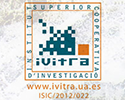On the supposed line of development of the medieval portraiture. From the donor to individual portrait
José María SALVADOR GONZÁLEZ, Cristina DE LA CASA RODRÍGUEZ
Original title: Sobre la supuesta línea de desarrollo de la retratística medieval. Del donante al retrato individual
Published in
Keywords: Donor, Flemish painting, Individual, Middle Ages, Portrait, Quattrocento.
This paper aims to assess the problems arisen when trying to talk about the development of medieval portraits. Usually, we tend to think that the donor is typical of the Early Middle Age, and then, progressively, the importance of the subject depicted increases, so that finally we can encounter the Italian, but mostly Flemish, portrait in which the values of modern society, such as the distance taken from the religious principles or the human being’s feeling of superiority, are reflected. Throughout our paper, this so-called perfect evolution will be tested, by doing an initial approach to the concepts of “donor” and “portrait”, so that we can realise that this kind of expressions used by art historiography are just characteristic of narrow-minded visions which cannot be used to reproduce the existing diversity of the Art. Finally, we will analyze the different ways of depicting people throughout the Middle Ages, giving particular emphasis on the line of thought and the philosophy dominant every concept and piece described, with the firm belief that ideas, instead of mere formalist analysis, give us the key points about the human being’s representations throughout history, and in a more precise way, the medieval period.
The Woman and the Androgyne in Leonardo da Vinci’s (1452-1519) pictorical work
María del Carmen BREA REINA
Original title: La Mujer y lo andrógino en la obra pictórica de Leonardo da Vinci (1452-1519)
Published in Music in Antiquity, Middle Ages & Renaissance
Keywords: Androgyne, Cinquecento, Leonardo da Vinci, Madonna, Quattrocento, Renaissance, Virgin.
Leonardo da Vinci is one of the main exponents of Italian Renaissance painting. In his work the female characters or Madonnas stand out, in many cases with a leading role of great symbolism. Leonardo makes this concept evolve into the figure of the androgynous person, mixing feminine and masculine features to bring a new perspective to his production.
The corporeal and the ethereal: the abstraction of color in Fra Angelico
Águeda ASENJO BEJARANO
Original title: Lo corpóreo y lo etéreo: la abstracción del color en Fra Angélico
Published in Mirabilia Journal 31 (2020/2)
Keywords: Abstraction, Color, Fra Angelico, Marble, Originality, Plasticity, Quattrocento.
With this study I intend to carry out a plastic and pictorial analysis of the work of the famous quattrocentist author Fra Angelico from the details that the Italian painter captured in his works where he combined colors in a totally heterogeneous way as watercolor surfaces, which recall and emulate to small abstract paintings generating an interconnection between the author’s innate creativity and his context. These fragments are like fields soaked in water and the colors flashes of pigment that spread across the canvas. He experimented with color and its possibilities within the painting, since although many authors define it as marbles, its originality and uniqueness are undoubted.
The iconography of the Virgin Mary’s Assumption in the Italian Quattrocento’s painting from the prospective of its patristic and theological sources
José María SALVADOR GONZÁLEZ
Original title: La iconografía de La Asunción de la Virgen María en la pintura del Quattrocento italiano a la luz de sus fuentes patrísticas y teológicas
Published in Paradise, Purgatory and Hell: the Religiosity in the Middle Ages
Keywords: Assomption, Iconography, Medieval Art, Patrology, Quattrocento.
The iconographic subject of the Assumption of the Virgin Mary to the heaven is based on a certain oral tradition and on some apocryphal writings, as well on a lot of homilies and interpretations of several Church Fathers and Doctors, such as John of Thessalonica, Saint John of Damascus and Saint Andrew of Crete, and a great number of other medieval theologians. All those literary sources, apocryphal and canonical, constitute the conceptual basis on which the Church has based the liturgical feasts and the iconography of the Death and the Assumption of the Mother of God. The iconography of the Mary’s Death, widely expressed in the Byzantine art since the 11th century, will begin to acquire some relevance in Europe since the 12th century, associating the Virgin’s triumph to the one of Jesus Christ in three characteristic subjects: the Death, the Assumption and the Coronation of Mary. Through the analysis of nine Italian paintings of the Quattrocento, our paper aims to show that such patristic and theological sources constitute the conceptual “model” that inspires in a direct and essential way the medieval iconography of Mary’s Assumption.






















































































